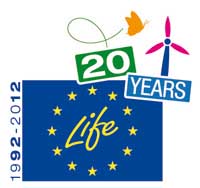Photonic Sensing SAFE WATER (On chip whispering gallery mode optical microcavities for emerging microcontaminant determination in water)
SAFEWATER is an international project within the action ERANET COFUND Photonic for sensing. The project focuses on the design and realization of a novel, portable platform based on optical WGM microbubble resonators able to perform a label-free multiplexed detection and determination of emerging microcontaminants (EMCs) in different water matrices with high sensitivity and extremely low limit of detection. Due to the multidisciplinary nature of the project, a strong synergistic interaction among all the involved partners with different expertise in chemistry, physics and engineering is requested in order to develop each basic block of the integrated final instrument. The consortium gathers together research organizations and industrial representatives coming from Poland, Portugal and Tuscany.
Activity period: 2018-2021
Our role in the project:
WEST SYSTEMS is responsible for the design and development of the overall control electronic systems for the implementation of the portable prototype instrument and its subsequent validation. It is also directly involved in the dissemination of the project leading with SF the activities connected with the intellectual property exploitation.
Partnership:
CNR IFAC - Istituto di Fisica Applicata "Nello Carrara" - Consiglio Nazionale delle Ricerche (IFAC-CNR) - Coordinator
WS - West Systems Srl
UNIFI - Università di Firenze, Dipartimento di Chimica "Ugo Schiff"
UNIPI - Università di Pisa, Dipartimento di Ingegneria dell'Informazione
IPC PAS - Institute of Physical Chemistry, Polish Academy of Sciences
SF - Scope Fluidics
INESC TEC - INESC Technology and Science/Centre for Applied Photonics
Information at: http://www.iet.unipi.it/g.barillaro/safewater/Home.html









